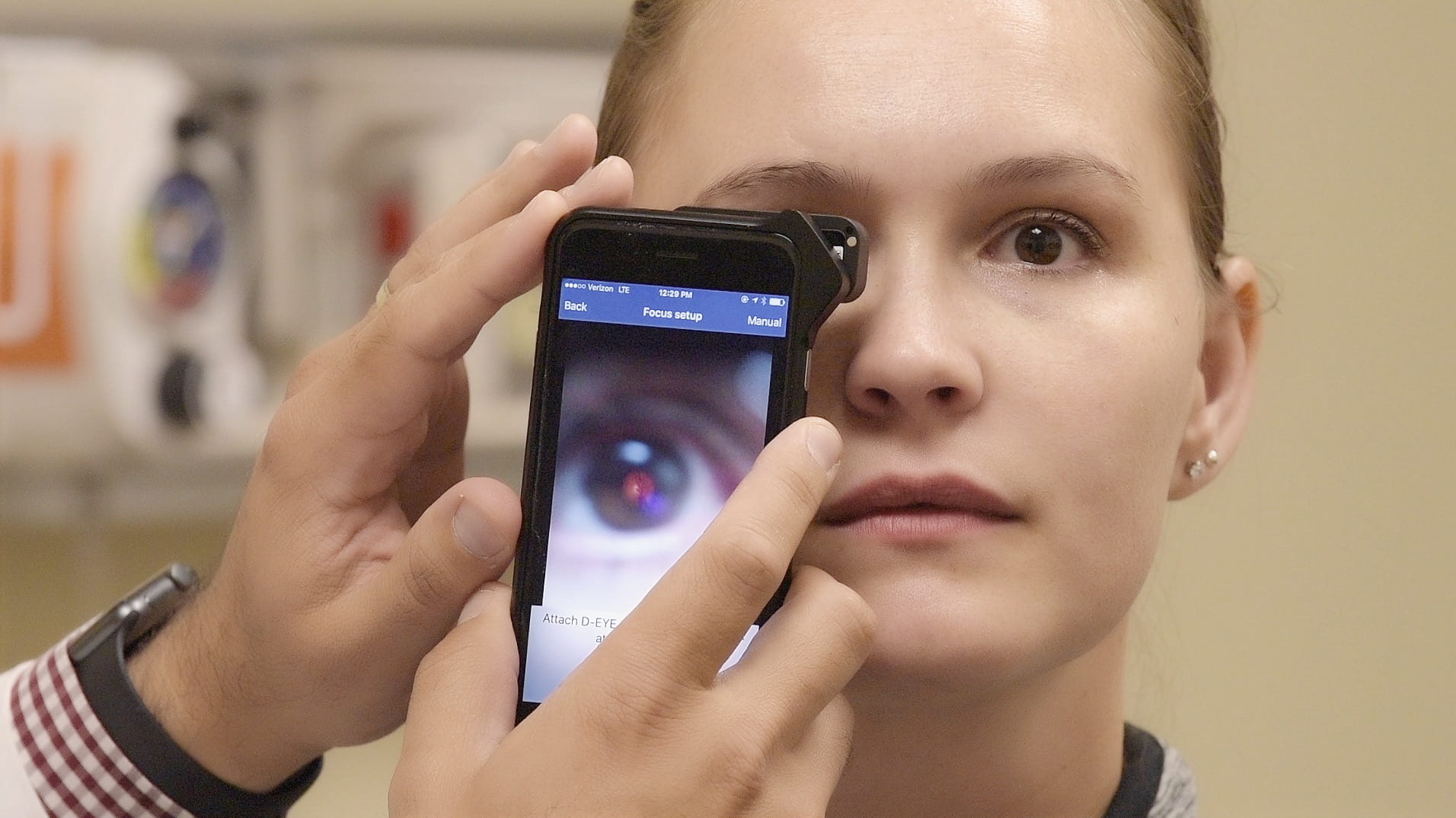Doctors go digital
Smartphone attachments are replacing traditional tools of the trade

For the better part of the past 150 years, the basic diagnostic instruments of medicine, such as the stethoscope, have remained pretty much the same. But with the creation of the smartphone 10 years ago, that’s changing, and the University of California, Irvine’s School of Medicine is exploring how new portable technologies can transform medical training and practice.
Dr. Warren Wiechmann, associate dean of clinical science education and educational technology, says that anyone with a few hundred dollars and a Bluetooth-enabled smartphone can have the diagnostic capabilities to create a portable clinic on par with a traditional doctor’s office.
In this video, Wiechmann demonstrates how some of these novel technologies are used to peer into eyes and ears, measure skin lesions and perform electrocardiograms. One device about the size of a hockey puck can take myriad vital signs when applied to the forehead. Welcome to the modern doctor’s bag.
“When we look at all these interesting tools that are coming out there, it really allows us to figure out how to best incorporate them into how we teach our students to interact with patients and to learn clinical skills,” says Wiechmann, who is also an assistant clinical professor of emergency medicine.
“Many of these devices can fundamentally change the way our students one day practice medicine, so our goal is to put this into the curriculum early so they will have mastered the technologies that we believe will be widespread in the future.”
He says that in the ER, he utilizes an otoscope attachment to his smartphone to probe deep into ear canals and a Bluetooth-capable stethoscope so that he can read heart rates on a computer tablet.
As for his medical students, Wiechmann is planning a summer pilot study in which those working abroad will employ the smartphone-attachable technologies when treating patients.
“Some of our students serve in impoverished, rural community clinics in Africa, Central America and China, and these portable devices are letting them bring the tools of a state-of-the-art exam room to people who rarely have access to hospitals,” he says.
Wiechmann adds that harnessing digital technologies for a forward-thinking curriculum is a key mission of the School of Medicine. UCI was among the first to use Google Glass in an academic medical setting, integrating the wearable computer into anatomy courses and clinical skills training.
Medical students here also are learning to utilize portable ultrasound as a noninvasive diagnostic tool for examining internal organs and blood flow. And specially designed iPad applications let them consult video tutorials while performing bedside ultrasounds. This allows students to review examples of normal and abnormal findings and to track procedures for quality assurance.
“We are preparing future physicians to practice 21st-century medicine in an increasingly digital, highly mobile healthcare environment,” Wiechmann says.